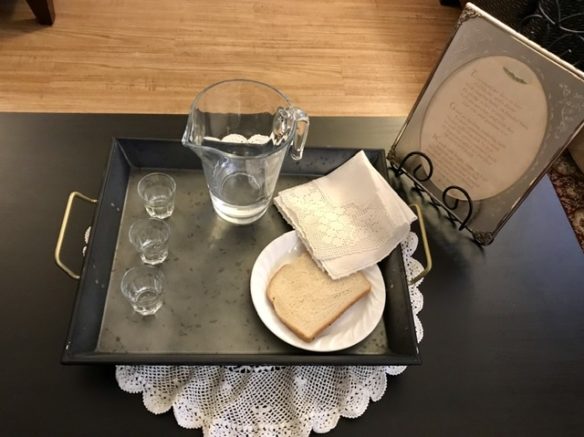
We all know that some ordinances must be administered in person, such as marriages, baptisms, blessings, and partaking of the sacrament. However it is possible to continue many aspects of community worship using other methods. For those who haven’t yet been invited to share in virtual congregational meetings, I wanted to share how this can be done.
Live Gatherings
My local Relief Society used Zoom for a gathering to discuss gardening and how to make bread. While there are several other platforms for communicating, Zoom offers several benefits:
- Participants can use either a computer or their phone or can even join using a land line. There is no need to have a specific type of computer or to be a member of a particular social media platform.
- Zoom offers unlimited time for any conference between just two participants.
- Zoom offers free 40 minute sessions for more than two participants (up to 1000 participants, I believe)
- Zoom allows you to record the video and audio content, including separate audio for each participant, allowing savvy folks to edit together a polished product after the fact.
- “Zoom” is easier to say than anything that has more syllables (e.g., FreeConferenceCall.com)
My local Relief Society will begin gathering virtually on alternating Sundays at a set time on Sunday afternoons.
Our congregation has had an “empty nesters” group for Family Home Evening for many years. With the advent of the stay at home orders and cancellation of live Church meetings, this has also migrated to Zoom. Useful tips for live meetings:
- Set the meeting so everyone is muted by default when they join.
- Designate a moderator for the meeting – preferably rotating this opportunity. This doesn’t need to be the meeting host. The moderator can help make sure everyone gets a chance to participate.
- Conduct a wee bit of training so people know how to use the “raise hand” feature. Those old Primary habits can help ensure a conversation that comes closer to order than the chaotic default.
Pre-recorded Devotionals
Folks in my local congregation have mad media skills. Since March 29 leadership has been assembling devotionals to support our Sabbaths. Talk about home-centered, Church-supported worship! The Easter devotional is inserted above.
The format of these devotionals has typically been:
- Opening remarks
- Opening Song
- Opening Prayer
- Church video (Easter was about the Holy Week, last week was President Nelson’s reading of the Restoration Proclamation)
- Talks and music provided by members of the congregation
- Sacramental Song
- Closing Prayer for the devotional and invitation for households to administer the sacrament in their homes if there is someone available who is authorized to administer the sacrament.
I’m not part of the team that puts together our Annandale Devotionals, and I don’t know how they managed some of the magic that resulted in this devotional. For example, the performance of Beautiful Savior involved a singer in Annandale and a pianist in Utah. But as a moderately-informed person, here are suggestions on how such devotionals can be created:
- However you create your devotional video or audio, post it to a platform such as youtube or soundcloud. This allows folks to worship on their schedule, rather than feeling disenfranchised if they miss the “live” broadcast window. For example, my Bishop sends out the link to the devotional Saturday evening.
- Create your video or audio content. This can be done locally and shared with the person designated to edit things together. Alternately, the tech wizard who will put things together can host Zoom conferences with each individual participant. Even if your devotional is just a sound file, Zoom has great options for capturing sound, and the interaction will be more natural when participants have a visual component to their interaction.
- If creating video using Zoom, set the view for the person doing the recording to presenter view rather than gallery view. This means only the person who is talking will show on the screen.
- Edit your content together. This allows you to get rid of any weird “live” things and alter audio levels to make things more even (if needed).
If you are editing audio, Audacity is a great option. We use ProTools at the radio studio where I volunteer, but even the radio station is recommending Audacity for producers who are working on their home computers.
If you are editing video, Google has a video editing suite that is part of the suite of tools anyone with a Gmail account can use. Obviously, if you have experience with other video editing tools and you have access to those tools at home, use what you know.
For those intimidated by these technical things, consider reaching out to the congregation. You won’t know what people have to contribute if you don’t ask. Young people, in particular, tend to be both knowledgeable about how to create/edit/share content and eager to improve those skills.
Mainly, I hope you and yours aren’t experiencing Sunday worship merely as one multi-week snow blizzard. While out personal worship can be sufficient, community is such a lovely addition to the basics we can supply for ourselves!
